The average price of property for sale increased by 1.7% (£5,992) to £366,189 in January.
This is the largest monthly price increase at the beginning of the year since 2020, as asking prices from new sellers recover from the typical seasonal dip in December. This indicator of optimism for the new year is in line with the latest Rightmove House Price Index.
Average asking prices are still £8,942 below the May 2024 peak, due to affordability restrictions for buyers. But with a record number of early bird new sellers entering the market from Boxing Day until early January, there appears to be pent-up demand to move.
The Rightmove index shows that the number of new homes coming onto the market is 11% higher than in the same period in early 2024, while the average number of homes for sale per estate agency is currently at its highest level for this time of year in 10 years. year.
The wide buyer choice has contributed to an increase in buyer inquiries and agreed sales compared to a year ago, but also means fierce competition among sellers to attract these new year buyers. Some sellers may feel they have been too optimistic about their initial prices and are left on the shelf in favor of more competitively priced neighbors.
Commenting on the latest figures, Rightmove property expert Colleen Babcock said: “New sellers have started the year with a bang, with record numbers coming onto the market not just on Boxing Day itself, but at the start of the year so far . We have also seen a strong start to the year in terms of asking prices from new sellers, although given the greater than expected competition between sellers, we expect this to slow in the coming months.”
She added: “Buyer activity is also off to an encouraging start to the year, with many festive-distracted buyers returning to complete their move. Since Boxing Day, the number of buyers contacting estate agents about homes for sale has increased by 9% compared to the same period last year. The combination of good choice and healthy buyer demand has kept the sales trend positive, with the number of sales agreed between buyers and sellers now 11% higher than this time last year.”
Interest rates move
However, Babcock stressed that uncertainties lie ahead, including the pace and extent of future rate cuts and the impact of increased stamp duty on many movers from April 1.
“One market sector that Rightmove expects to be particularly affected is smaller homes, which are typical for first-time buyers. Since Boxing Day, the number of enquirers in this sector has increased by 8%, the lowest increase of all market sectors. First-time buyers in cheaper parts of England will be largely unaffected. However, the rise in stamp duty for those buying over £300,000 will hamper the important market at the bottom of the ladder in higher-end areas unless additional help for first-time buyers is announced soon.”
Nathan Emerson, CEO of Propertymark, commented: “As we move into the new year, it is positive to see that many of the variables driving the housing market continue to adjust. We continue to see regional differences in overall house price growth and contributing factors such as the unwinding of inflation.
“What we are seeing is an encouraging rise in consumer confidence, with an average jump of 10% in potential buyers registering their interest in a purchase. This, coupled with the desire for many existing transactions to beat any stamp duty increases in England and Northern Ireland before April, has opened the year quickly.”


